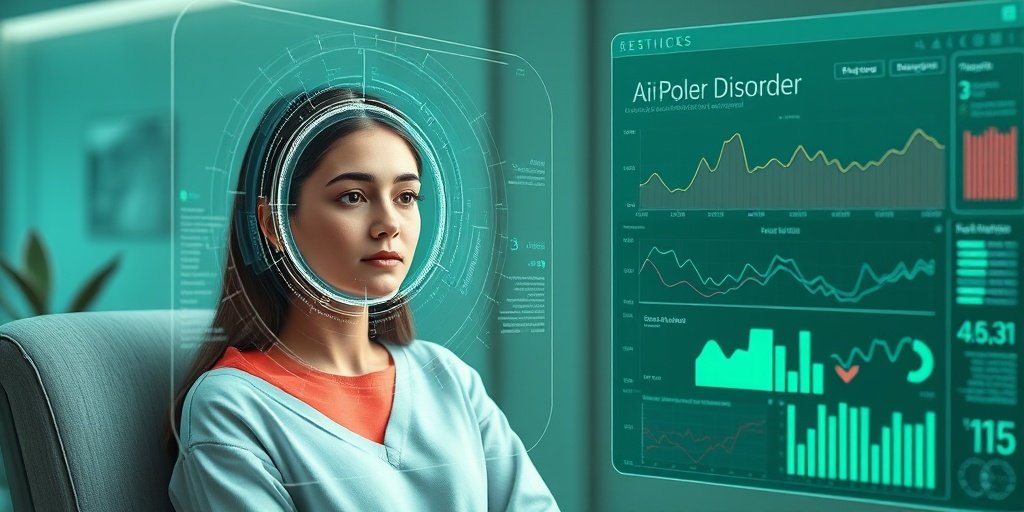⚡ Quick Summary
This study utilized machine learning to analyze national health records in Taiwan, identifying key predictors for the conversion of bipolar II disorder (BD-II) to bipolar I disorder (BD-I). The predictive model achieved an impressive accuracy of 86% and an AUC of 0.91, highlighting the potential for early clinical intervention.
🔍 Key Details
- 📊 Dataset: 1,890 individuals diagnosed with BD-II
- 🧩 Features used: Demographic factors, healthcare utilization, comorbidities, psychotropic medication use
- ⚙️ Technology: Extreme Gradient Boosting (XGBoost)
- 🏆 Performance: Accuracy 86%, Sensitivity 77%, Specificity 87%, AUC 0.91
🔑 Key Takeaways
- 🔍 14% of BD-II patients converted to BD-I in the study cohort.
- 💡 Key predictors included younger age, female sex, and healthcare utilization patterns.
- 📉 Lower incidence of new-onset medical and psychiatric comorbidities indicated a higher risk for conversion.
- 💊 Increased use of lithium, anticonvulsants, and second-generation antipsychotics characterized high-risk profiles.
- 📈 Machine learning offers a data-driven framework for early intervention and personalized care.
- 🌍 Study conducted using the Taiwan National Health Insurance Research Database (2000-2013).

📚 Background
Bipolar disorder is a complex mental health condition that significantly impacts individuals’ lives. Understanding the transition from Bipolar II disorder (BD-II) to Bipolar I disorder (BD-I) is crucial, as this conversion can lead to more severe psychosocial consequences. Despite its importance, research on this transition has been limited, prompting the need for innovative approaches such as machine learning to analyze real-world data.
🗒️ Study
This retrospective cohort study analyzed data from the Taiwan National Health Insurance Research Database spanning from 2000 to 2013. Researchers focused on adults diagnosed with BD-II, employing XGBoost to develop a predictive model for BD-I conversion. The dataset was divided into development and test sets to evaluate model performance effectively.
📈 Results
The final machine learning model demonstrated strong predictive performance, achieving an accuracy of 86%, sensitivity of 77%, specificity of 87%, and an AUC of 0.91 in the external validation cohort. Key predictors included younger age, female sex, and variations in healthcare utilization before and after diagnosis, alongside medication usage patterns.
🌍 Impact and Implications
The findings from this study underscore the potential of machine learning in mental health care, particularly in identifying patients at elevated risk for conversion from BD-II to BD-I. By leveraging real-world data, healthcare providers can implement early interventions and tailor treatment plans, ultimately improving patient outcomes and quality of care.
🔮 Conclusion
This research highlights the transformative role of machine learning in predicting the conversion of BD-II to BD-I. The ability to stratify patients based on risk factors offers a promising avenue for early clinical intervention and personalized care strategies. Continued exploration in this field is essential for enhancing mental health treatment and outcomes.
💬 Your comments
What are your thoughts on the use of machine learning in predicting mental health outcomes? We would love to hear your insights! 💬 Leave your comments below or connect with us on social media:
Uncovering predictors of bipolar II conversion to bipolar I: A machine learning analysis of national health records in Taiwan.
Abstract
BACKGROUND: Bipolar II disorder (BD-II) can progress to bipolar I disorder (BD-I), carrying profound psychosocial consequences. However, limited research has investigated the transition from BD-II to BD-I. Our study uses machine learning to predict the conversion using real-world data.
METHODS: We conducted a retrospective cohort study using the Taiwan National Health Insurance Research Database (2000-2013) to identify adults diagnosed with BD-II. A predictive model for BD-I conversion was developed using extreme gradient boosting (XGBoost), incorporating demographic factors, healthcare utilization, comorbidities, and psychotropic medication use. The dataset was randomly divided into development (80 %) and test (20 %) sets. Model performance was evaluated by accuracy, sensitivity, specificity, and area under the receiver operating characteristic curve (AUC). Feature importance was interpreted using Shapley Additive Explanations (SHAP).
RESULTS: Among the 1890 individuals diagnosed with BD-II, 14 % subsequently converted to BD-I. The final machine learning model demonstrated strong predictive performance, achieving an accuracy of 86 %, sensitivity of 77 %, specificity of 87 %, and an area under the receiver operating characteristic curve (AUC) of 0.91 in the external validation cohort. Younger age, female sex, fewer outpatient visits before and more after diagnosis were key predictors. Lower incidence of new-onset medical (e.g., respiratory, gastrointestinal) and psychiatric (e.g., anxiety, insomnia) comorbidities also indicated higher risk. Increased use of lithium, anticonvulsants, second-generation antipsychotics, and hypnotics further characterized high-risk profiles.
CONCLUSION: Our findings highlight the utility of machine learning in stratifying BD-II patients at elevated risk for BD-I conversion, offering a data-driven framework to support early clinical intervention and personalized care.
Author: [‘Hsu CW’, ‘Chen YB’, ‘Wang LJ’, ‘Hung KC’, ‘Chen MH’, ‘Vieta E’, ‘Chen CY’, ‘Liang CS’, ‘Carvalho AF’]
Journal: J Affect Disord
Citation: Hsu CW, et al. Uncovering predictors of bipolar II conversion to bipolar I: A machine learning analysis of national health records in Taiwan. Uncovering predictors of bipolar II conversion to bipolar I: A machine learning analysis of national health records in Taiwan. 2025; (unknown volume):120518. doi: 10.1016/j.jad.2025.120518